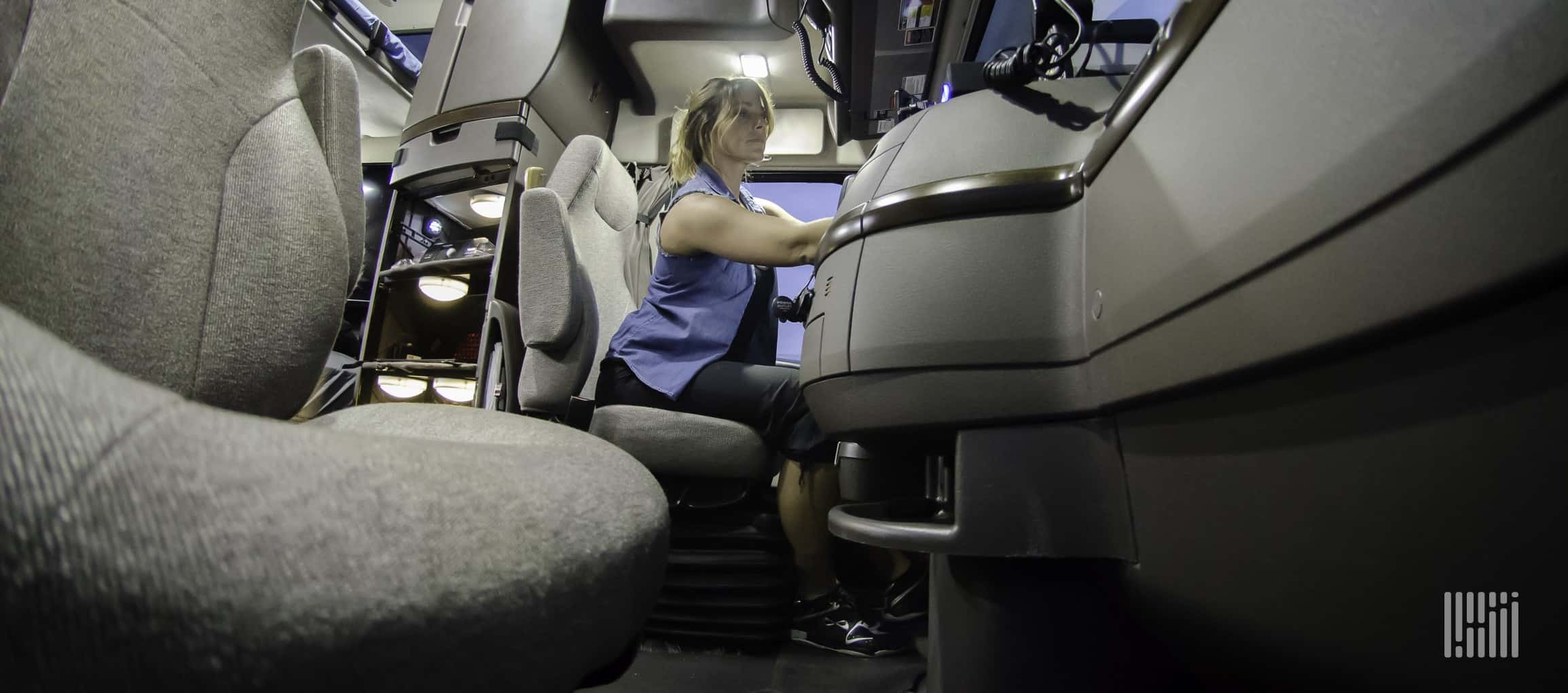Truck drivers have different needs when it comes to dash cams compared to regular passenger vehicle owners. Using dash cams can help protect both types of drivers, but the ideal features and uses may differ. Professional truckers require equipment made to withstand the demands of commercial driving.
Keep reading to learn how truck dash cams differ from consumer models in features, video quality, durability, and relevant regulations.
And when you’re finished, check out the other articles in our ‘Dash cams for trucks’ series:
- Dash cam for semi trucks vs cars: What’s the difference?
- Truck dash cam benefits for road and driver safety
- Can dash cams increase ROI for your business?
- Best semi truck camera system guide
What are the benefits of dash cams for trucks?
Both semi trucks and passenger cars can benefit from using dash cams while driving. But the specific features and primary use cases differ based on the vehicle type and driver needs. By selecting a dash cam optimized for your kind of vehicle, you can better protect yourself on the road.
For trucking companies, fleet managers and drivers, a semi truck dash cam offers several important benefits. Dash cameras for trucks can, for instance:
- Provide video evidence in case of accidents: Semi truck drivers are especially vulnerable to being blamed in accidents with passenger cars. Having video from a dash cam for trucks can protect the driver from false claims. If there is an investigation, solid video evidence can clear up who was really at fault.
- Deter unsafe driving: Many car drivers drive recklessly around big rigs, cutting them off or tailgating dangerously. A visible trucker dash cam can discourage this behavior and motivate other motorists to drive more cautiously.
- Monitor cargo: A fleet camera system allows trucking companies to remotely monitor cargo and ensure sensitive loads are transported safely. The footage can also provide proof of delivery or document cargo damage that might occur in transit.
- Capture important footage: Dash cams for semi trucks can automatically record sudden impacts or accidents. This provides invaluable documentation of what transpired for insurance claims and police reports.
- Improve driver performance: Responsible drivers may footage from a dash cam for truckers to proactively analyze their own performance and look for areas of improvement. Companies may also monitor drivers for safety and compliance via fleet dash cam video.
Comparison: Dash cam for semi trucks vs cars
Installing quality fleet camera systems designed specifically for trucks provides protection, compliance, and fleet integration. Here’s how they compare across several categories that are crucial in truck fleet cameras.
Video quality
Commercial vehicle camera systems need to capture clear footage for safety and liability purposes. They utilize high-resolution cameras that record crisp video even in low light conditions. Standard resolutions are 1080p or higher. Consumer dash cams often max out at 720p resolution, which provides inadequate detail for reviewing footage.
Wide angle field of view
Truck driver dash cams are designed with wide angle lenses, usually 120-140 degrees. This allows the camera to cover more area in and around the truck cab. Consumer dash cams typically have angles of 110-130 degrees, limiting side visibility. The expanded field of view is critical for truckers to capture their entire surroundings.
Data overlays
Commercial fleet cams overlay important data directly onto the video footage, including speed, GPS coordinates, date, and time. This provides critical information if an accident occurs. Basic consumer models don’t include overlay capabilities. The best trucker dash cams integrate additional sensors to collect data on hard braking, rapid acceleration, and engine fault codes.
Durability
Commercial dashboard cameras are subjected to much harsher conditions than passenger vehicle models. They feature heavy duty designs and components to withstand vibrations, extreme temperatures, and weather elements. Most consumer dash cams use cheaper plastic components that degrade over time. Commercial truck dash cams utilize metal, rubber seals, and waterproof casings for maximum durability in commercial use.
Long recording time
Truckers need extended recording times due to long hauls and DOT regulations. Commercial models provide 10-24 hours of continuous dash cam loop recording. Extended recording also requires large storage — truck systems have slots for 256GB or higher dash cam SD cards. Passenger vehicle dash cams usually top out at 1-2 hours of continuous loop recording time with smaller dash cam memory card capabilities.
Fleet management integration
Many trucking operators use fleet management software to track vehicles, drivers, fuel usage, maintenance, and expenses. The best dash cam for fleet vehicles can integrate with these systems to transmit data and video footage. This allows managers to remotely access video evidence from commercial fleet cameras if an incident occurs. There are no reporting capabilities with consumer dash cams.
DOT/FMCSA compliance
The Department of Transportation and Federal Motor Carrier Safety Administration have regulations around electronic logging devices (ELDs) to track driver hours of service. Commercial business dash cams are designed to sync with compatible ELD systems. Consumer models don’t have these fleet compliance features. Truck drivers need compliant equipment to avoid violations.
Driver facing cameras
The best dash cams for truckers may include both forward facing and driver facing cameras to monitor what’s happening inside the cab. The driver cam protects the operator from false claims and provides coaching opportunities. Passenger vehicles lack these dual camera requirements. Some commercial systems integrate side facing cameras for complete 360 degree visibility.
Built for professional use
At the end of the day, the main difference comes down to the fact that a dash cam for company vehicles is purpose built for commercial driving demands. They incorporate heavy duty designs with fleet management capabilities required in the transportation industry. Consumer models simply lack the video quality, durability, storage, compliance features, and extended recording times needed for professional drivers.
For professional truckers, only commercial-grade equipment will do. There’s simply no comparison between a consumer grade dash cam and the best dash cams for semi trucks engineered to meet the demands of life on the road.
Key features to look for in the best truck dash cams
When researching dash cams for your truck, look for models that:
- Record in 1080p or higher resolution
- Have at least a 120 degree field of view
- Overlay critical data like speed and GPS on the video
- Use durable, waterproof casing and components
- Support 256GB+ SD cards for extended recording
- Integrate with ELD and fleet management systems
- Include both forward and driver facing cameras
- Come from reputable brands that stand behind their products
Invest in a professional dash cam trucker solution
Your truck is your office, and you should protect it accordingly. Contact a qualified supplier specializing in commercial fleet electronics to find the right dash cam system for your needs and budget. Investing in one of the best commercial vehicle camera systems will provide peace of mind and potentially vital evidence when you need it most.
FAQ
Truckers should choose a dash cam designed specifically for commercial vehicles, with features like high video quality, durability, extended recording times, fleet management integration, and compliance with DOT regulations. Consumer-grade dash cams lack the heavy duty construction and capabilities needed for professional driving.
Yes, having video evidence from a dash cam can help lower insurance costs by protecting truckers against fraudulent claims. Some insurers offer discounts for installing dash cams, since the cameras promote safer driving.
Dash cams are commonly mounted on the truck’s windshield, either centered behind the rear view mirror or on the passenger side. Dash cams should have an unobstructed view of the road ahead but not block the driver’s line of sight.


